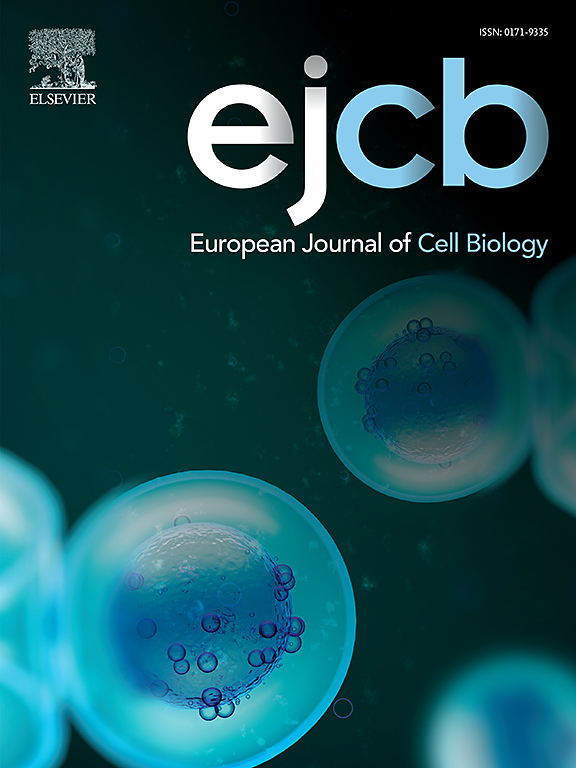罗哌卡因和利多卡因通过线粒体功能障碍和凋亡抑制SaOS-2骨肉瘤细胞的增殖和侵袭
IF 4.3
3区 生物学
Q2 CELL BIOLOGY
引用次数: 0
摘要
局部麻醉剂通常用于疼痛管理,但其对癌细胞的广泛影响仍不完全清楚。在这里,我们通过一系列体外实验研究盐酸罗哌卡因和盐酸一水利多卡因对SaOS-2人骨肉瘤细胞的影响。我们的研究结果表明,通过XTT和菌落形成实验,两种麻醉剂都能显著降低细胞活力和增殖。机制研究揭示了线粒体功能的显著破坏,表现为膜电位降低、线粒体超氧化物生成增强和明显的线粒体断裂。同时,基质金属蛋白酶(MMP-2、MMP-9)表达下调,促凋亡标志物(Caspase-3、Caspase-9、BAX)表达上调。这两种药物都不能改变Vimentin或E-cadherin的表达,表明对上皮-间质转化途径的影响有限。值得注意的是,利多卡因和罗哌卡因还可以抑制SaOS-2细胞的迁移和侵袭,这一点在Scratch、单细胞迁移和Transwell侵袭实验中得到了证实。此外,这两种药物抑制碱性磷酸酶活性,这是与骨肉瘤分化和转移潜力相关的标志。综上所述,这些结果支持罗哌卡因和利多卡因通过损害骨肉瘤细胞的线粒体稳态和侵袭性表型而发挥广泛的抗肿瘤作用的结论。它们减轻恶性肿瘤核心特征的能力强调了进一步研究局部麻醉药作为骨肉瘤潜在辅助治疗的必要性。本文章由计算机程序翻译,如有差异,请以英文原文为准。
Ropivacaine and lidocaine inhibit SaOS-2 osteosarcoma cell proliferation and invasion via mitochondrial dysfunction and apoptosis
Local anesthetics are routinely used for pain management, yet their broader effects on cancer cells remain incompletely understood. Here, we investigate the impact of ropivacaine hydrochloride and lidocaine hydrochloride monohydrate on SaOS-2 human osteosarcoma cells using a series of in vitro assays. Our findings indicate that both anesthetics markedly reduce cell viability and proliferation, as measured by XTT and Colony formation assays, respectively. Mechanistic studies reveal significant disruption of mitochondrial function, evidenced by decreased membrane potential, enhanced mitochondrial superoxide production, and pronounced mitochondrial fragmentation. Concurrently, the expression of matrix metalloproteinases (MMP-2 and MMP-9) is downregulated, while pro-apoptotic markers (Caspase-3, Caspase-9, and BAX) are upregulated. Neither agent alters Vimentin or E-cadherin expression, suggesting a limited effect on epithelial-mesenchymal transition pathways. Notably, lidocaine and ropivacaine also inhibit SaOS-2 cell migration and invasion, as demonstrated by Scratch, single-cell migration, and Transwell invasion assays. Furthermore, both agents suppress alkaline phosphatase activity, a hallmark associated with osteosarcoma differentiation and metastatic potential. Taken together, these results support the conclusion that ropivacaine and lidocaine exert broad anti-tumor effects by impairing both mitochondrial homeostasis and the invasive phenotype in osteosarcoma cells. Their capacity to mitigate core hallmarks of malignancy underscores the need for further investigation into local anesthetics as potential adjuvant therapies for osteosarcoma.
求助全文
通过发布文献求助,成功后即可免费获取论文全文。
去求助
来源期刊

European journal of cell biology
生物-细胞生物学
CiteScore
7.30
自引率
1.50%
发文量
80
审稿时长
38 days
期刊介绍:
The European Journal of Cell Biology, a journal of experimental cell investigation, publishes reviews, original articles and short communications on the structure, function and macromolecular organization of cells and cell components. Contributions focusing on cellular dynamics, motility and differentiation, particularly if related to cellular biochemistry, molecular biology, immunology, neurobiology, and developmental biology are encouraged. Manuscripts describing significant technical advances are also welcome. In addition, papers dealing with biomedical issues of general interest to cell biologists will be published. Contributions addressing cell biological problems in prokaryotes and plants are also welcome.
 求助内容:
求助内容: 应助结果提醒方式:
应助结果提醒方式:


